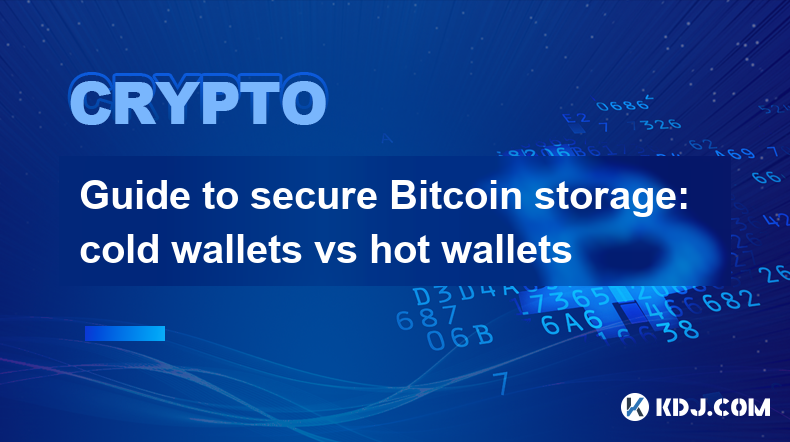-
 Bitcoin
Bitcoin $84,713.1827
1.52% -
 Ethereum
Ethereum $1,623.6873
1.81% -
 Tether USDt
Tether USDt $0.9998
0.02% -
 XRP
XRP $2.1830
5.67% -
 BNB
BNB $593.1006
0.48% -
 Solana
Solana $130.1833
4.67% -
 USDC
USDC $0.9998
-0.01% -
 Dogecoin
Dogecoin $0.1660
2.01% -
 TRON
TRON $0.2472
-0.78% -
 Cardano
Cardano $0.6508
2.97% -
 UNUS SED LEO
UNUS SED LEO $9.4154
0.60% -
 Chainlink
Chainlink $13.0188
2.27% -
 Avalanche
Avalanche $20.0994
5.28% -
 Sui
Sui $2.3440
5.86% -
 Stellar
Stellar $0.2451
2.61% -
 Hedera
Hedera $0.1724
1.48% -
 Shiba Inu
Shiba Inu $0.0...01235
0.52% -
 Toncoin
Toncoin $2.8997
-0.20% -
 Bitcoin Cash
Bitcoin Cash $342.7932
9.65% -
 MANTRA
MANTRA $6.3078
-1.10% -
 Litecoin
Litecoin $78.9540
3.66% -
 Polkadot
Polkadot $3.6837
2.68% -
 Hyperliquid
Hyperliquid $16.1621
2.98% -
 Dai
Dai $1.0002
0.02% -
 Bitget Token
Bitget Token $4.3704
-0.32% -
 Pi
Pi $0.7485
9.91% -
 Ethena USDe
Ethena USDe $0.9991
0.02% -
 Monero
Monero $206.9354
-0.35% -
 Uniswap
Uniswap $5.4320
2.37% -
 OKB
OKB $54.1533
2.34%
What is Bitcoin halving? Analysis of the impact on prices
Bitcoin halving, occurring every four years, reduces miner rewards, increases scarcity, and historically boosts prices, impacting the crypto's economy and market dynamics.
Apr 09, 2025 at 01:14 pm

Bitcoin halving is a pivotal event in the cryptocurrency world that occurs approximately every four years, or every 210,000 blocks. The event is designed to reduce the rate at which new bitcoins are generated, thereby controlling inflation and increasing scarcity over time. During a halving, the reward that miners receive for successfully adding a block to the blockchain is cut in half. This mechanism is integral to Bitcoin's protocol and has significant implications for its economy and market dynamics.
The Mechanics of Bitcoin Halving
The process of Bitcoin halving is straightforward yet impactful. When Bitcoin was first launched, miners received 50 bitcoins for each block they added to the blockchain. The first halving occurred in November 2012, reducing the reward to 25 bitcoins per block. The second halving took place in July 2016, further reducing the reward to 12.5 bitcoins. The most recent halving happened in May 2020, bringing the reward down to 6.25 bitcoins. The next halving is expected around 2024, where the reward will be reduced to 3.125 bitcoins.
Impact on Bitcoin's Supply and Scarcity
The primary effect of Bitcoin halving is on the supply of new bitcoins entering the market. By halving the reward, the rate at which new bitcoins are created is reduced, which in turn increases the scarcity of the cryptocurrency. Bitcoin has a capped supply of 21 million coins, and halving events ensure that this cap is approached more slowly. This scarcity can drive up demand and, consequently, the price of Bitcoin.
Historical Price Movements Post-Halving
Analyzing the historical data around Bitcoin halvings reveals a pattern of significant price increases following these events. After the first halving in 2012, Bitcoin's price rose from around $12 to over $1,000 within a year. Following the second halving in 2016, the price increased from approximately $650 to nearly $20,000 by the end of 2017. The third halving in 2020 saw Bitcoin's price surge from around $8,000 to over $60,000 in the subsequent year. While past performance is not indicative of future results, these trends suggest a strong correlation between halving events and price appreciation.
The Role of Miners and Mining Economics
Bitcoin halving directly affects miners, as their revenue from block rewards is cut in half. This can lead to a shakeout in the mining industry, where less efficient miners may find it unprofitable to continue operations. However, miners can also benefit from rising Bitcoin prices post-halving, which can offset the reduced block rewards. Additionally, transaction fees become a more significant part of miners' revenue as the block reward diminishes over time.
Market Sentiment and Speculation
Market sentiment plays a crucial role in the price movements following a Bitcoin halving. The anticipation of reduced supply often leads to increased buying pressure as investors and traders speculate on future price increases. Media coverage and public awareness of the halving event can further amplify this effect. However, it's important to note that while halving events can contribute to bullish market conditions, they are not the sole determinant of Bitcoin's price, which is influenced by a myriad of other factors including regulatory news, macroeconomic trends, and technological developments.
Long-Term Implications for Bitcoin's Value
The long-term implications of Bitcoin halving are tied to its fundamental value proposition as a store of value. By ensuring a predictable and diminishing supply, halving events reinforce Bitcoin's deflationary nature, which is often compared to digital gold. This scarcity model can attract investors looking for assets that can hedge against inflation and currency devaluation. As the block reward continues to decrease with each halving, the reliance on transaction fees will grow, potentially leading to a more robust and self-sustaining network.
Frequently Asked Questions
Q: How does Bitcoin halving affect the overall security of the network?
A: Bitcoin halving can impact the security of the network indirectly through its effect on miners. If the block reward becomes too low, some miners might exit the network, potentially reducing the total hash rate and making the network more vulnerable to attacks. However, rising Bitcoin prices post-halving can incentivize miners to stay, maintaining or even increasing the network's security.
Q: Can Bitcoin halving lead to increased volatility in the market?
A: Yes, Bitcoin halving can lead to increased volatility. The anticipation and aftermath of a halving event often result in heightened trading activity and speculative behavior, which can cause significant price swings. Investors and traders should be prepared for potential volatility around these events.
Q: Are there any other cryptocurrencies that implement a halving mechanism?
A: Yes, several other cryptocurrencies have adopted a halving mechanism similar to Bitcoin. Notable examples include Litecoin, which halves its block reward approximately every four years, and Bitcoin Cash, which follows a similar schedule to Bitcoin. These halving events can have similar impacts on their respective ecosystems.
Q: How can investors prepare for a Bitcoin halving?
A: Investors can prepare for a Bitcoin halving by staying informed about the event's timing and potential market impacts. Diversifying their cryptocurrency portfolio, setting clear investment goals, and being prepared for increased volatility can help manage risks. Additionally, understanding the broader market context and not relying solely on the halving event for investment decisions is crucial.
Disclaimer:info@kdj.com
The information provided is not trading advice. kdj.com does not assume any responsibility for any investments made based on the information provided in this article. Cryptocurrencies are highly volatile and it is highly recommended that you invest with caution after thorough research!
If you believe that the content used on this website infringes your copyright, please contact us immediately (info@kdj.com) and we will delete it promptly.
- Bitcoin Price Today, April 13, 2025
- 2025-04-13 16:45:12
- Bitcoin (BTC) Shows Notable Resilience as It Clings to Support Above the Critical $74,000 Mark
- 2025-04-13 16:45:12
- Pi Network Launches New Ad Program with the Expansion of Its Ad Network
- 2025-04-13 16:40:15
- The Next Shiba Inu? XYZVerse Promises to Merge Sports Fandom with Crypto Community
- 2025-04-13 16:40:15
- Long-Term Holder Activity and Chart Patterns Suggest a Major Bitcoin Move Is Coming
- 2025-04-13 16:40:12
- Born from a meme, Dogecoin has established itself as a paradox of cryptocurrencies: both a joke and a serious asset.
- 2025-04-13 16:40:12
Related knowledge

What is Bitcoin halving? Analysis of the impact on prices
Apr 09,2025 at 01:14pm
Bitcoin halving is a pivotal event in the cryptocurrency world that occurs approximately every four years, or every 210,000 blocks. The event is designed to reduce the rate at which new bitcoins are generated, thereby controlling inflation and increasing scarcity over time. During a halving, the reward that miners receive for successfully adding a block...

What to do if Bitcoin is stolen? Security protection and recovery possibilities
Apr 09,2025 at 03:42pm
If your Bitcoin is stolen, it can be a distressing experience, but there are steps you can take to protect your remaining assets and attempt to recover your lost funds. This article will guide you through the process of securing your Bitcoin and exploring recovery possibilities. Immediate Actions After Bitcoin TheftThe moment you realize your Bitcoin ha...

How to avoid Bitcoin investment scams? Common scams revealed
Apr 10,2025 at 05:14pm
Introduction to Bitcoin Investment ScamsBitcoin and other cryptocurrencies have become increasingly popular investment options, attracting both seasoned investors and newcomers alike. However, with the rise in popularity, there has also been a surge in Bitcoin investment scams. These scams can range from Ponzi schemes to fake exchanges and fraudulent in...

Guide to secure Bitcoin storage: cold wallets vs hot wallets
Apr 11,2025 at 08:42am
Guide to Secure Bitcoin Storage: Cold Wallets vs Hot Wallets When it comes to storing Bitcoin, security is paramount. The choice between cold wallets and hot wallets can significantly impact the safety of your digital assets. This guide delves into the differences between these two types of wallets, their respective advantages and disadvantages, and how...

What is Bitcoin fork? Differences between BTC, BCH, and BSV
Apr 10,2025 at 02:21am
A Bitcoin fork refers to a change in the underlying protocol of the Bitcoin blockchain, which results in a divergence into two separate versions of the blockchain. This can happen as a result of a disagreement within the community about the direction of the cryptocurrency, or to introduce new features or improvements. There are two main types of forks: ...

The role of Bitcoin wallets: public keys, private keys and security analysis
Apr 09,2025 at 03:00am
Bitcoin wallets play a crucial role in the world of cryptocurrency, serving as the gateway to securely store, send, and receive Bitcoin. Understanding the intricacies of Bitcoin wallets, particularly the concepts of public keys, private keys, and security analysis, is essential for anyone looking to navigate the cryptocurrency landscape safely and effec...

What is Bitcoin halving? Analysis of the impact on prices
Apr 09,2025 at 01:14pm
Bitcoin halving is a pivotal event in the cryptocurrency world that occurs approximately every four years, or every 210,000 blocks. The event is designed to reduce the rate at which new bitcoins are generated, thereby controlling inflation and increasing scarcity over time. During a halving, the reward that miners receive for successfully adding a block...

What to do if Bitcoin is stolen? Security protection and recovery possibilities
Apr 09,2025 at 03:42pm
If your Bitcoin is stolen, it can be a distressing experience, but there are steps you can take to protect your remaining assets and attempt to recover your lost funds. This article will guide you through the process of securing your Bitcoin and exploring recovery possibilities. Immediate Actions After Bitcoin TheftThe moment you realize your Bitcoin ha...

How to avoid Bitcoin investment scams? Common scams revealed
Apr 10,2025 at 05:14pm
Introduction to Bitcoin Investment ScamsBitcoin and other cryptocurrencies have become increasingly popular investment options, attracting both seasoned investors and newcomers alike. However, with the rise in popularity, there has also been a surge in Bitcoin investment scams. These scams can range from Ponzi schemes to fake exchanges and fraudulent in...

Guide to secure Bitcoin storage: cold wallets vs hot wallets
Apr 11,2025 at 08:42am
Guide to Secure Bitcoin Storage: Cold Wallets vs Hot Wallets When it comes to storing Bitcoin, security is paramount. The choice between cold wallets and hot wallets can significantly impact the safety of your digital assets. This guide delves into the differences between these two types of wallets, their respective advantages and disadvantages, and how...

What is Bitcoin fork? Differences between BTC, BCH, and BSV
Apr 10,2025 at 02:21am
A Bitcoin fork refers to a change in the underlying protocol of the Bitcoin blockchain, which results in a divergence into two separate versions of the blockchain. This can happen as a result of a disagreement within the community about the direction of the cryptocurrency, or to introduce new features or improvements. There are two main types of forks: ...

The role of Bitcoin wallets: public keys, private keys and security analysis
Apr 09,2025 at 03:00am
Bitcoin wallets play a crucial role in the world of cryptocurrency, serving as the gateway to securely store, send, and receive Bitcoin. Understanding the intricacies of Bitcoin wallets, particularly the concepts of public keys, private keys, and security analysis, is essential for anyone looking to navigate the cryptocurrency landscape safely and effec...
See all articles






















































































